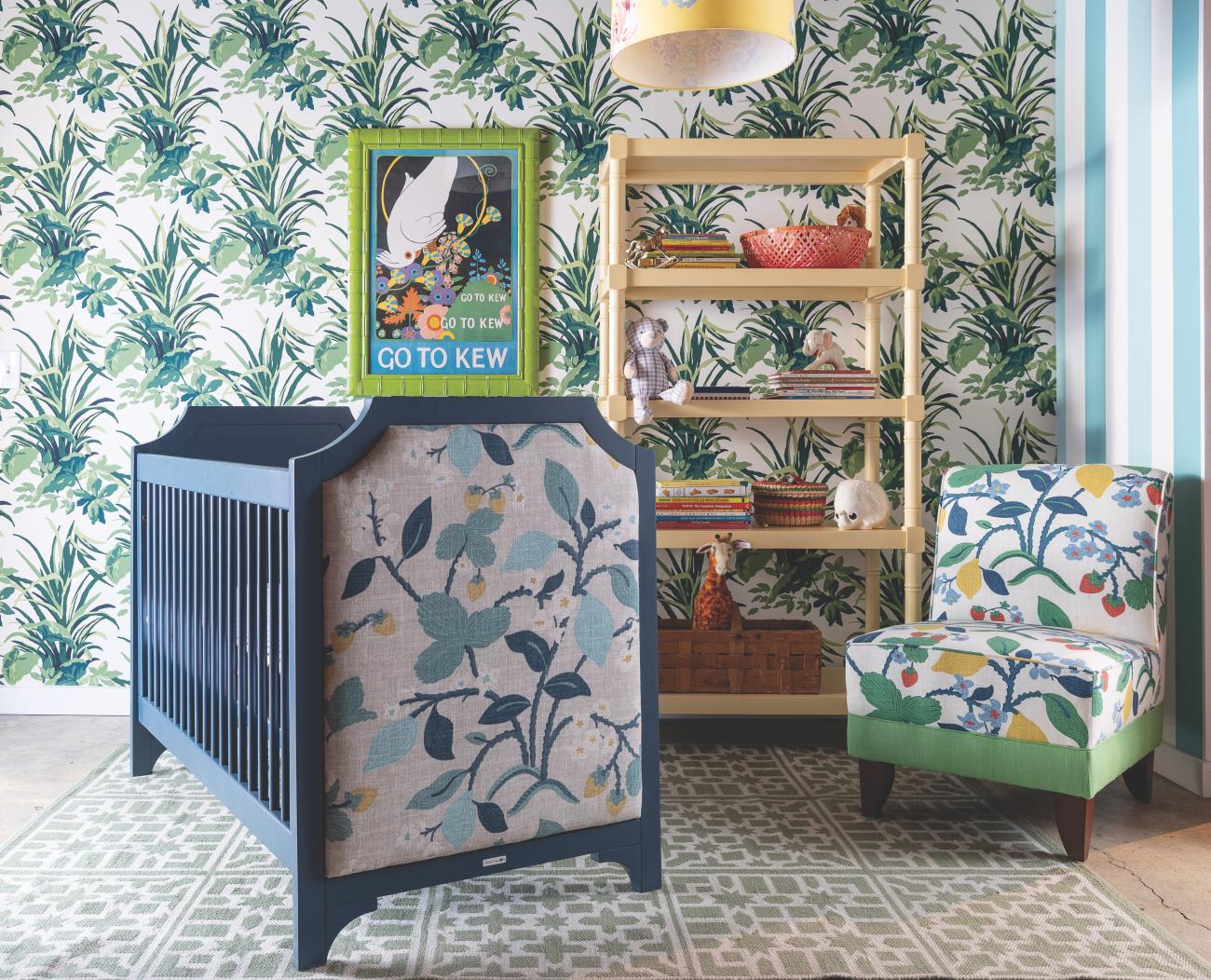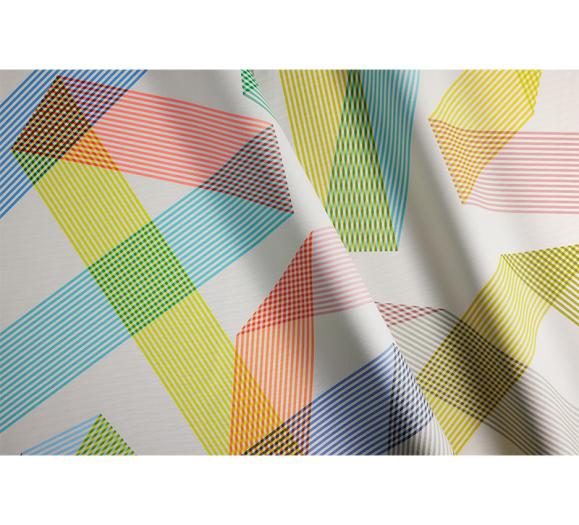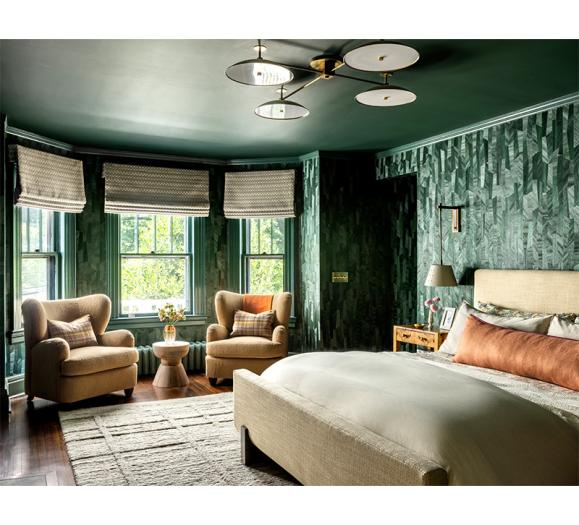It’s often said that fashion trends influence home trends, and as maximalism reigns supreme on the runways, it’s making its way into homes in the form of patterns and prints on upholstered furniture. From granny chic florals to Art Deco geometrics, consumers are increasingly embracing patterns in their homes.
“I’m just happy that pattern on furniture is trending,” says Stacy Garcia, textile designer, blogger and trend forecaster. “We’ve been in a minimal market for a while now and as much as I like minimal modern, I love pattern. The fun thing is that there is a mix and match of pattern happening. We’re seeing a deliberate play on scale and juxtaposition of motif to create beautiful tension within a space.”
The Anti-Trend
Upholstered furniture often refers to big-ticket items such as sofas and chairs, which can be an investment for consumers. To make this investment last, some clients might instinctively opt for a neutral color that will transcend time, trends and design styles to get the most bang for their buck. Eschewing trends is one way to make patterned upholstery feel timeless.
“You should never be trendy,” says Jason Oliver Nixon, Co-founder of Madcap Cottage. “You should always be on trend.”
The Madcap Cottage duo doesn’t shy away from patterns and prints in both interior and product design. Nixon and John Loecke, Madcap’s other half, are known for their colorful patterns adorning fabrics, wallpaper, rugs, lighting and accessories. Though there’s a fine line between “trendy” and “on trend,” Loecke and Nixon aim to stay on the latter side.
“I think with the fabrics and wallpapers that we’ve created, we really try to do things that are timeless,” Loecke says. “We don’t necessarily look at what’s trending in terms of colors or pattern. We do things that we feel are missing in the marketplace. Yes, maximalism is trending, especially in the fashion space and it’s finally trickling into home. But we didn’t start off saying, ‘This is the trend and we need to come up with products that fit this look.’”
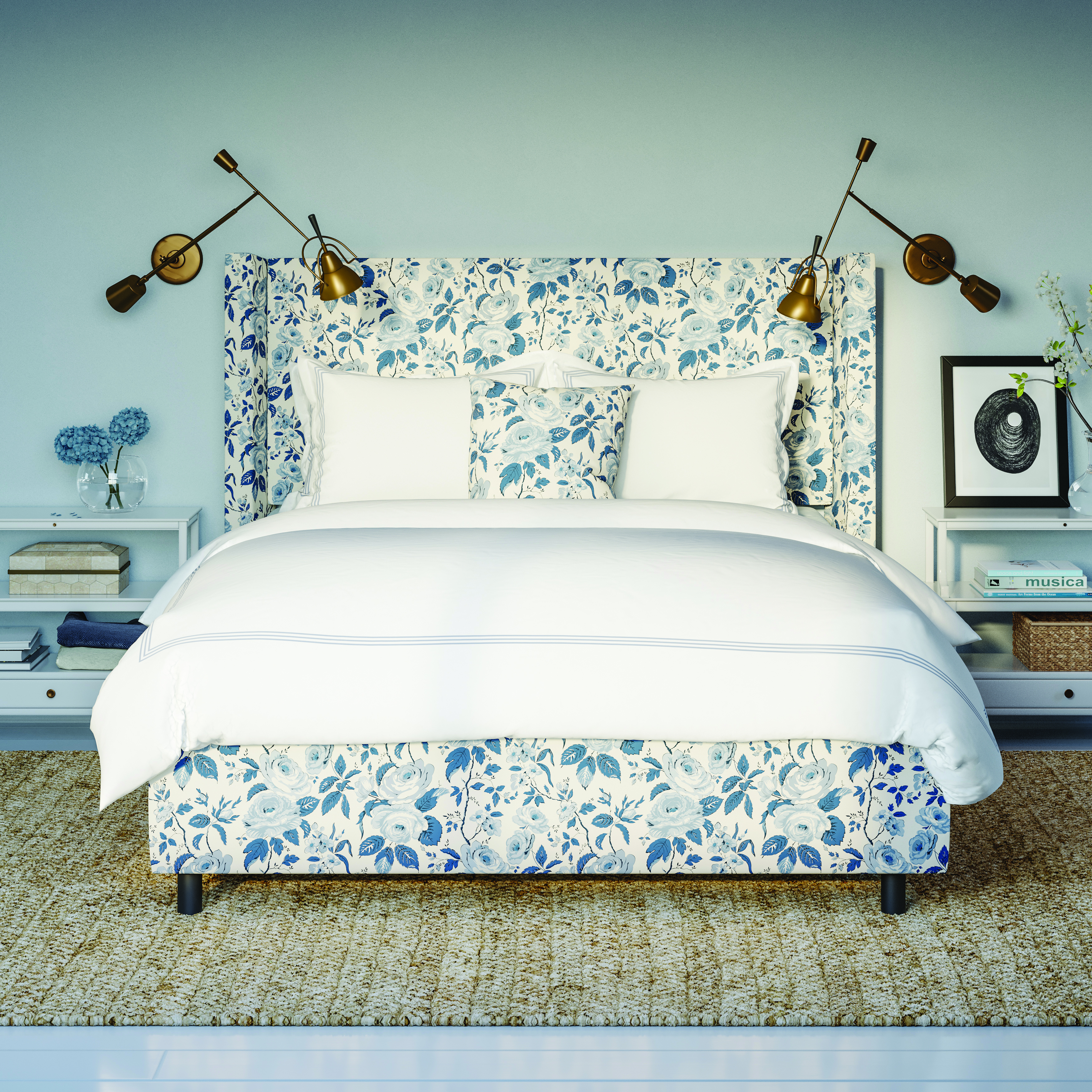
Christiane Lemieux, Co-founder of direct-to-consumer online custom furniture retailer The Inside, agrees that trendy shouldn’t be the goal, even if it’s what the client thinks they want.
“A particularly trendy pattern is typically something the homeowner loves, so the designer’s job is to ground that in pieces that have longevity and feel classic, so the statement piece reads less like a trend and more like a considered, timeless element,” Lemieux says. “That juxtaposition of styles conveys thoughtfulness over trendiness.”
The Inside offers a variety of furniture styles, all of which can be upholstered in one of many fabric types and patterns. The site promotes the hashtag #beyondthebeige, encouraging customers to think outside the box when it comes to their furnishings.
Realizing that it can be intimidating to commit to an investment piece in a fabric you haven’t seen in person, The Inside does provide consumers and designers (the site has a trade program as well) swatches upon request to help quell any fears about exploring pattern. The site also offers virtual design consultations to help customers decide what level of pattern might be right for them.
What They Don’t Know
Many clients naturally gravitate toward neutrals, but it’s the job of designers and retailers to help them find pieces they might not have chosen for themselves.
“Nobody walks into a beige or white room and says, ‘Wow, I feel so welcome,’” Nixon says. “You bring color in and it puts a smile on their face. It puts some sparkle in their eyes and they feel the magic. As Marshall Field once said, ‘Give the lady what she doesn’t know she wants.’”
“It’s giving them permission and it’s showing them how to do it because that’s where they stumble,” Loecke adds. “They don’t know how to do it, and then they default to gray and they maybe get cold feet because it’s not something they see in their everyday life.”
Loecke and Nixon confer with their interior design clients about their lives and interests. They ask about favorite restaurants, travel spots and retailers. They make note of their fashion choices to see how prints and patterns are used in their clothing. When all of these components come together, the duo will pull a selection of patterns for the client to review.
“We sit down and do basically a Rorschach test with them where we look at patterns and it’s yes, no, or maybe,” Loecke says. “And what you find is that not only do they not necessarily realize that some of this stuff exists, but they actually get really excited about it and they start to embrace the idea.”
Lemieux echoes the sentiment that designers are tasked with bringing their clients’ personalities to light.
“At the end of the day, designers are interpreters of personal style, and the best designers always leave evidence of having been in their clients’ homes,” Lemieux says. “It’s really about showing your client the versions of things they love and are comfortable with that push the envelope in terms of design.”
In retail, merchandising is key to showing customers what they didn’t know they wanted.
“Furniture stores have gone safe and they show everything in a neutral color because not everybody coming in the door is going to want a particular fabric,” Loecke says. “But if you never show people that they have those options, they are never going to pick those options. You have to romance the customer and get them to say, ‘Maybe I don’t like that particular pattern on that chair, but I could put a pattern with my solid sofa, so let me see what other fabrics you have that could go on this chair.’”
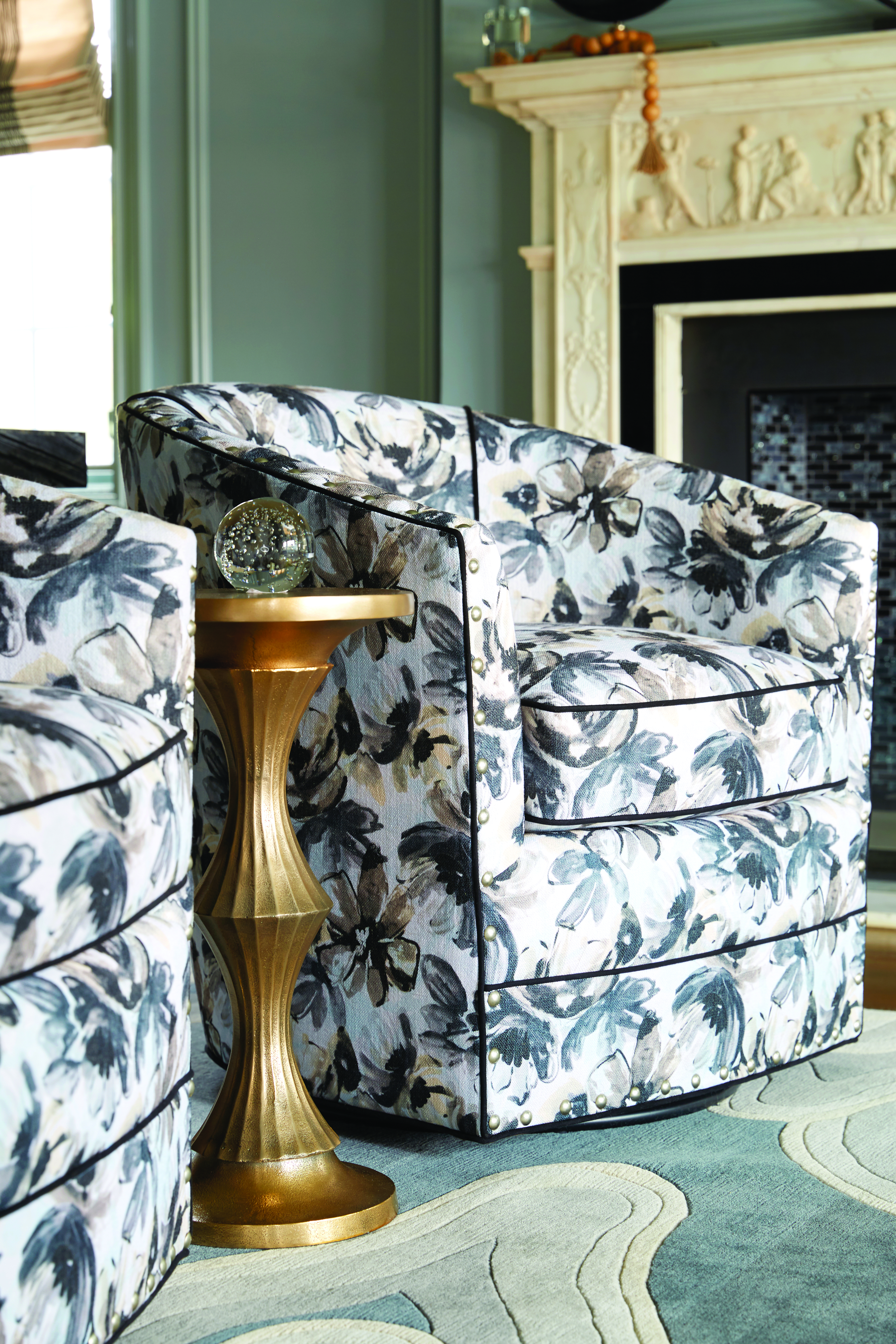
Garcia suggests retailers use layering to showcase patterns within a vignette in a way that isn’t overwhelming.
“Create intentional design moments with scale and color play,” she says. “Create the appropriate balance of pattern and texture within a vignette. Bold patterns on smaller accent pieces such as an ottoman or side chair can demonstrate creating a statement in a space without scaring away potential customers.”
Making It Last
As personal and on-trend as these patterned pieces may be, clients will still want them to stand the test of time. They lean on the expertise of design professionals to help create a cohesive space that won’t feel dated when the next trend comes along.
“Layer, layer, layer,” Garcia says. “Trends evolve over time so it is all about slowly layering in new pieces. Multicolor patterns allow you the opportunity to pull out new accent colors and refresh a space over time.” She suggests pairing classic patterns with trend-forward accessories that can be swapped out to keep a space feeling fresh.
“Designers can play with scale and tone,” Lemieux says. “If you have a large-scale cabana stripe, you can do a pillow or ottoman in the same tone but a different pattern, like a geometric or floral. It’s pretty easy to mix and match color stories for an instant update.”
Ultimately, clients hire designers to help them create something they wouldn’t — or couldn’t — otherwise create for themselves. Patterned upholstery might be intimidating to some, but there is a way to create a balance of design elements in a space that will help make these investments timeless and push a client outside of their comfort zone.
“At the end of the day, you don’t need a designer to help you pick a beige sofa or gray sofa or to paint your walls gray,” Loecke says. “Anybody can do that on their own. You need a designer to help push your boundaries and take you to that next level.”



